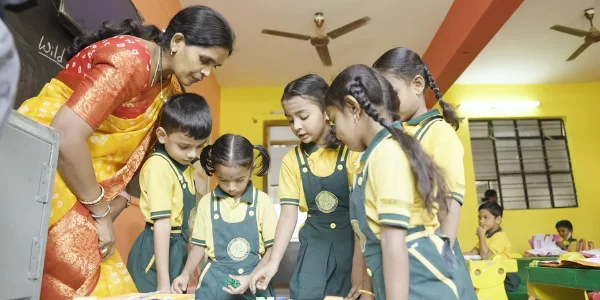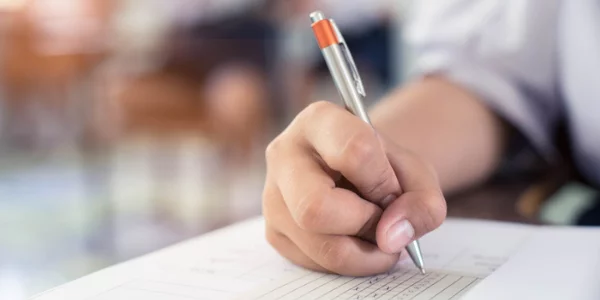Art Integration in NEP 2020 | Creative Learning with NEP

Give Your School The Lead Advantage
The NEP 2020 stated on page 12 (para 4.7) that:
“Art-integration is a cross-curricular pedagogical approach that utilizes various aspects and forms of art and culture as the basis for learning of concepts across subjects. As a part of the thrust on experiential learning, art-integrated education will be embedded in classroom transactions not only for creating joyful classrooms but also for imbibing the Indian ethos through the integration of Indian art and culture in the teaching and learning process at every level. This art-integrated approach will strengthen the linkages between education and culture.”
So what is Art-Integrated learning?
Art-integrated learning is an inventive and constructivist learning approach through which students illustrate, experiment & demonstrate the concept through various art forms. Art integration into the curriculum implies exploring academic contents (facts, ideas, concepts, processes, methods) and skill sets to be acquired by a student through the spectacles of various forms of art. Instead of teaching art as a separate subject, teachers are using dance, drama, music, visual arts, etc to teach a variety of academic subjects more engagingly. A 360-degree holistic learning is possible in classrooms by integrating various academic concepts with arts. Cognitive domains along with socio-emotional, behavioural, and psychomotor domain development could be targeted using this.
Why is art integration essential for the classrooms of today?
Integrating arts into the subjects not only brings JOY but also makes the learners ACTIVE which eventually leads to the development of 21st-century skills. Creativity and innovation utilized in the artistic process compel children to think creatively & help these skills come more naturally in real life or in the future workplace. Teaching Learning Materials, Lesson plans, School excellence kits, etc., promote art-integrated learning in LEAD powered schools.
Let’s look at the various advantages of art-integrated classrooms.
Deeper Understanding & Longer Retention
Learners who participate in art-integrated classes demonstrate longer retention and articulate deeper meaning in the concepts taught in the classroom.
Provides Authentic and Personally Meaningful Learning
When the learners are involved in art-integrated projects they tend to become personal to the learners, making it more respectful, creative & meaningful work.
Builds Cooperation, Collaboration, and Confidence
Art integration builds an environment of Cooperation, Collaboration, and Confidence which fosters a true ‘one class…one team’ feeling among students. Students cooperate better with one another and recognize the strengths of their peers by working with one another.
Creates Self-awareness
The arts-integrated lessons create a room for self-expression & self-awareness. Learners get a chance to imagine, create, and move while taking lessons.
Create a Sense of Ownership
During the art-integrated classes, learners can express what they have learned in various subjects through different art forms, whether it is theatre/role play or studying a painting, or writing a poem, art-integrations truly give students a sense of ownership of their work and love for what they have created.
The “Learning by Doing’ approach followed in the science curriculum not only fosters art-integration but also brings experiential learning into the classrooms.
As mentioned on the page 12 para 4.6 of NEP 2020:
In all stages, experiential learning will be adopted, including hands-on learning, arts-integrated and sports-integrated education, and story-telling-based pedagogy, among others, as standard pedagogy within each subject, and with explorations of relations among different subjects. To close the gap in achievement of learning outcomes, classroom transactions will shift, towards competency-based learning and education. The assessment tools (including assessment “as”, “of”, and “for” learning) will also be aligned with the learning outcomes, capabilities, and dispositions as specified for each subject of a given class.
Conclusion
We at LEAD use different approaches to various subjects as given below. Each of these approaches promotes art-integrated learning through our lesson plans. Let’s go through a teaching plan & see the mapping of the art-integrated activity in Grade 4 -EVS.
Let’s go through a sample LEAD teaching plan. Here role play is used by teachers to help students understand the concept of energy transfer in the food chain.
During the activity, students get to learn through the following:
- Developing an appreciation for acting
- Relating to energy transfer in organisms
- Depicting the sun as a source of energy
- Comparing and arranging various organisms around
- Describing energy transfer in a food chain
Through this and many other ways, learning made at LEAD Powered Schools is holistic and engaging. Our mission is to make such excellent education accessible and affordable for every child in India. Find a LEAD Powered School near you to experience it yourself!



